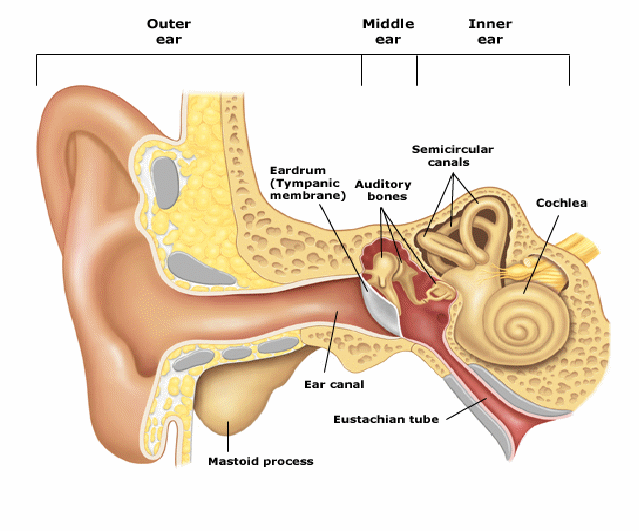The ear converts sound into electrical signals in the brain. There are three main sections – the outer, middle and inner ear.

The shape of the ear allows sound waves to arrive at the ear drum or lymphatic membrane. The middle ear converts sound waves into oscillations of the ear drum, then into oscillations in the fluid in the inner ear using three small bones – the auditory bones above, which are constructed so as to increase the force applied to the rightmost bone attached to the cochlea by 50%, and the smaller area of this bone compared to the eardrum increases the pressure. The inner ear and the cochlea convert convert oscillations in the air pressure to larger oscillations in the fluid pressure in the cochlea fluid and then into electrical signals that are sent to the brain.
As much of the sound energy reaching the ear drum needs to be converted into electrical energy as possible, this is achieved by a process of impedance mat.
The semicircular canals in the digam above and the eustachian tube are not part of the hearing aparatus. The semicircular canals assist in maintaining balance, and the eustachian tube connects the middle ear to the mout and allows the pressure on either side of the eardrum to be equalized.
